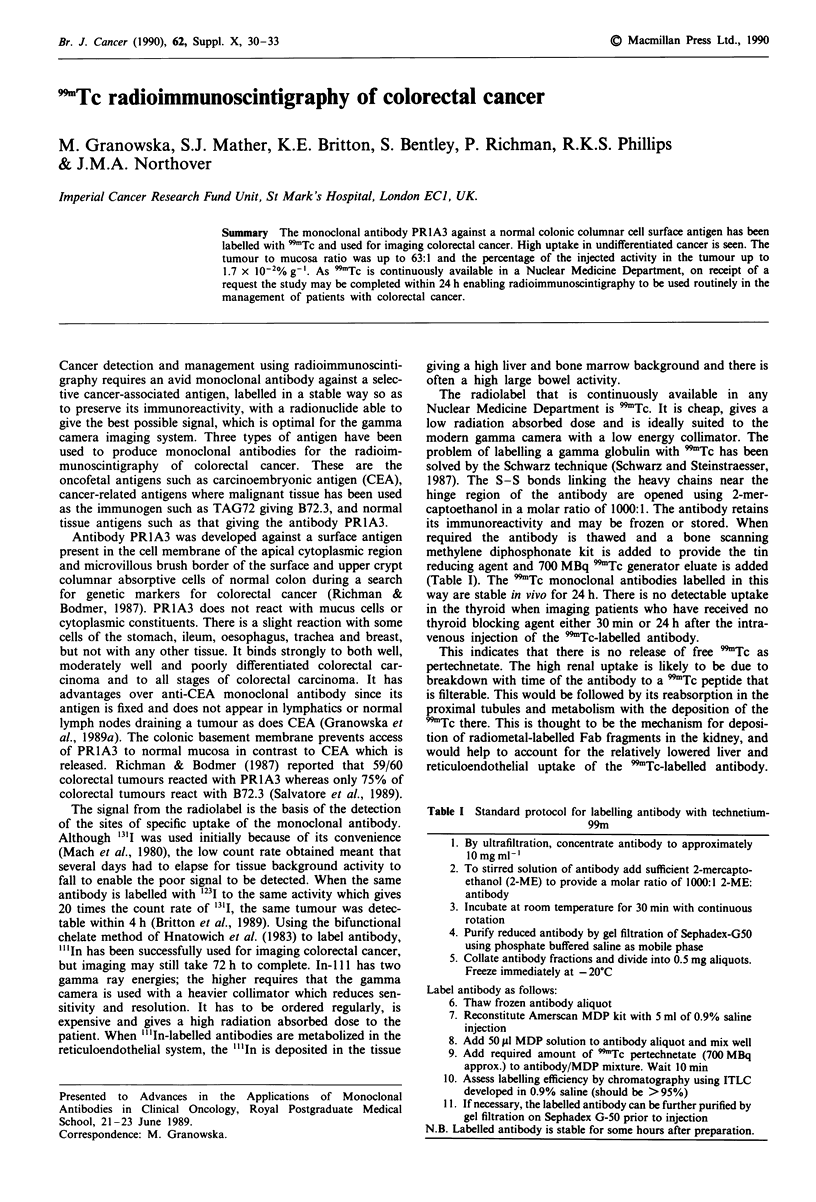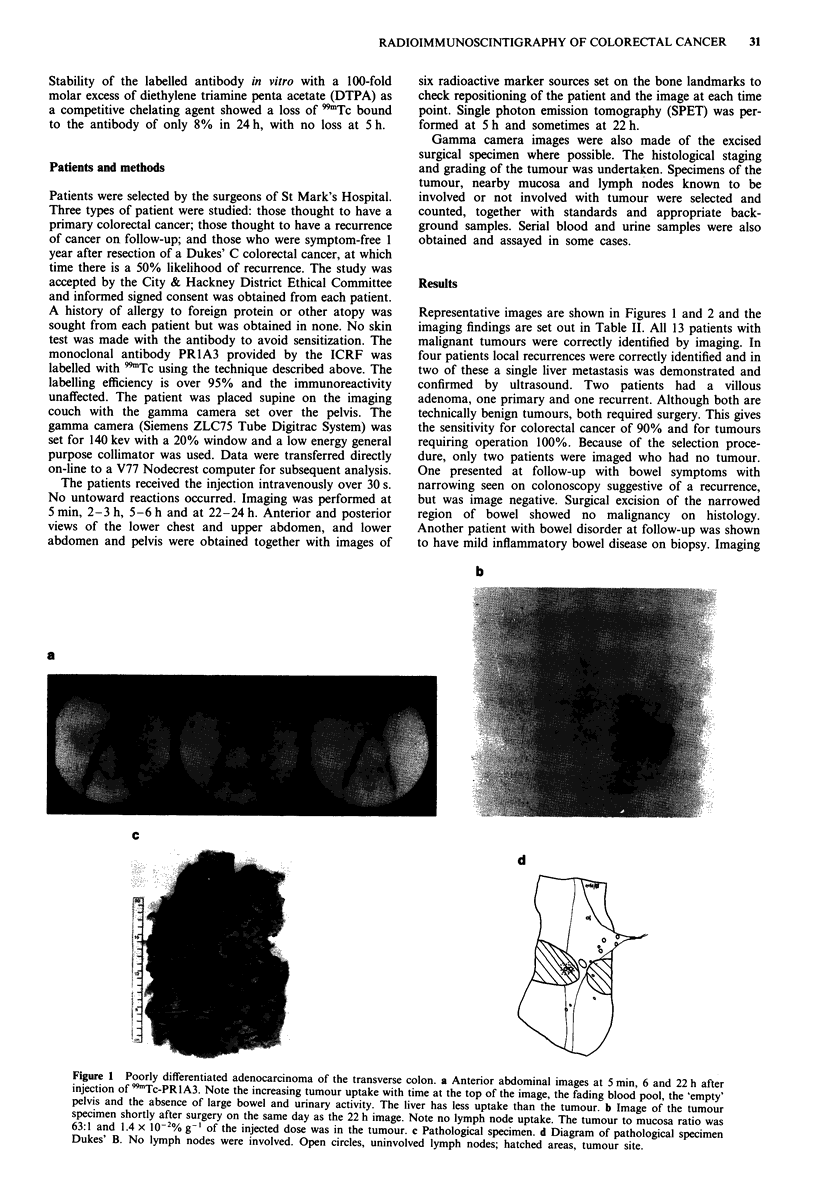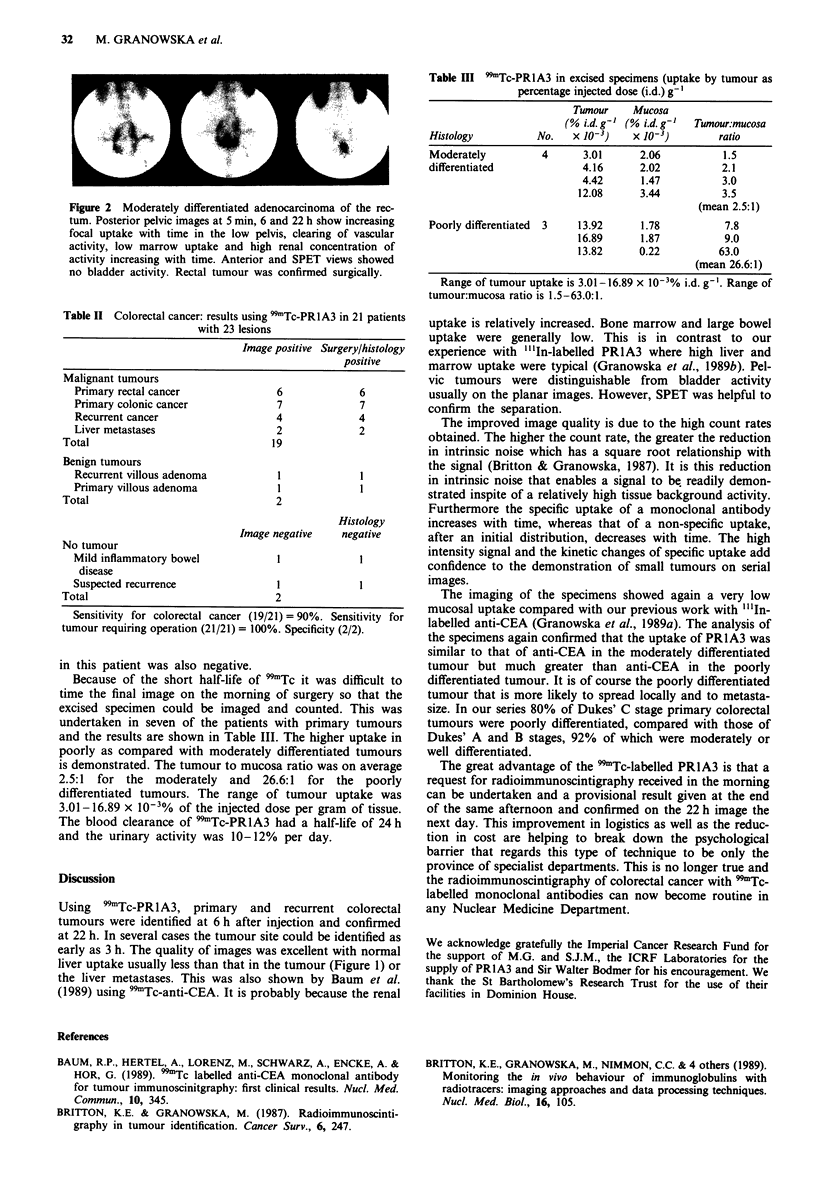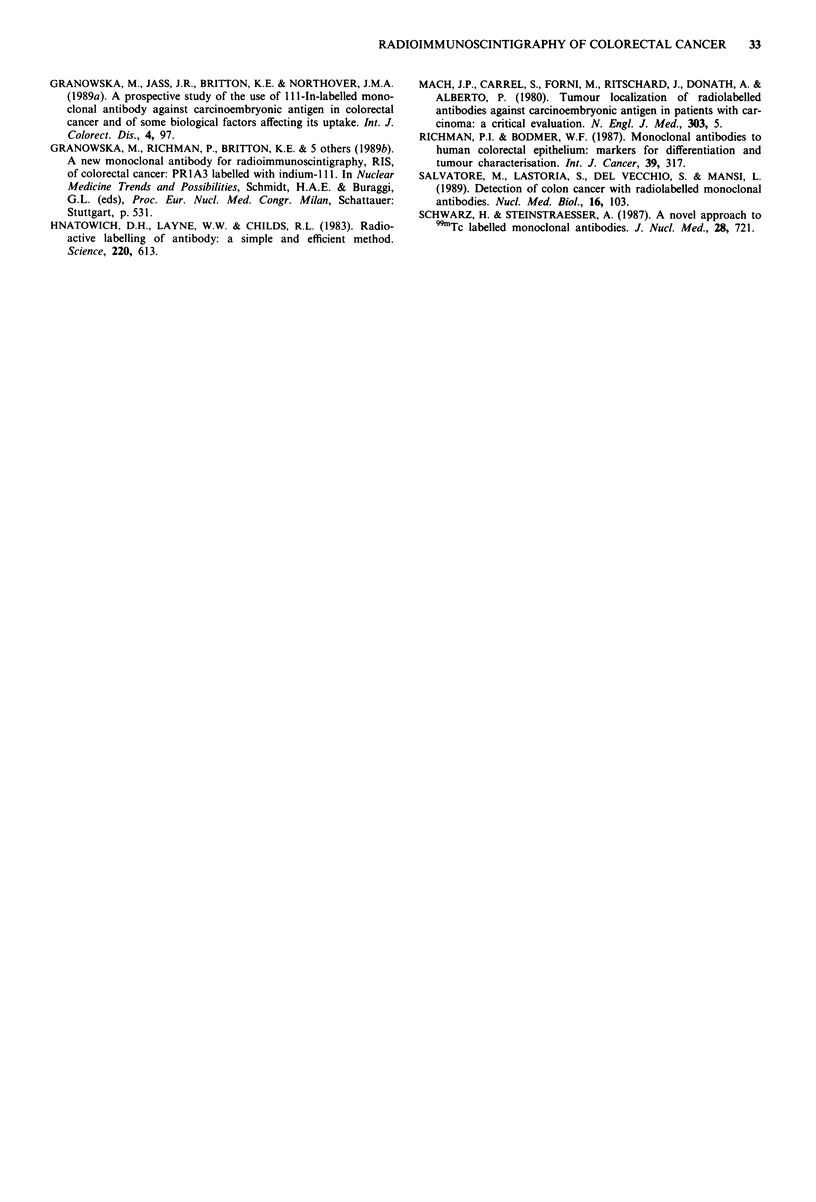Abstract
The monoclonal antibody PR1A3 against a normal colonic columnar cell surface antigen has been labelled with 99mTc and used for imaging colorectal cancer. High uptake in undifferentiated cancer is seen. The tumour to mucosa ratio was up to 63:1 and the percentage of the injected activity in the tumour up to 1.7 X 10(-2%)g-1. As 99mTc is continuously available in a Nuclear Medicine Department, on receipt of a request the study may be completed within 24 h enabling radioimmunoscintigraphy to be used routinely in the management of patients with colorectal cancer.
Full text
PDF



Images in this article
Selected References
These references are in PubMed. This may not be the complete list of references from this article.
- Baum R. P., Hertel A., Lorenz M., Schwarz A., Encke A., Hör G. 99Tcm-labelled anti-CEA monoclonal antibody for tumour immunoscintigraphy: first clinical results. Nucl Med Commun. 1989 May;10(5):345–352. doi: 10.1097/00006231-198905000-00005. [DOI] [PubMed] [Google Scholar]
- Britton K. E., Granowska M., Nimmon C. C., Crowther M., Mather S., Bomanji J., Shepherd J. Monitoring the in vivo behaviour of immunoglobulins with radiotracers: imaging approaches and data processing techniques. Int J Rad Appl Instrum B. 1989;16(2):105–109. doi: 10.1016/0883-2897(89)90180-3. [DOI] [PubMed] [Google Scholar]
- Britton K. E., Granowska M. Radioimmunoscintigraphy in tumour identification. Cancer Surv. 1987;6(2):247–267. [PubMed] [Google Scholar]
- Granowska M., Jass J. R., Britton K. E., Northover J. M. A prospective study of the use of 111In-labelled monoclonal antibody against carcino-embryonic antigen in colorectal cancer and of some biological factors affecting its uptake. Int J Colorectal Dis. 1989;4(2):97–108. doi: 10.1007/BF01646868. [DOI] [PubMed] [Google Scholar]
- Hnatowich D. J., Layne W. W., Childs R. L., Lanteigne D., Davis M. A., Griffin T. W., Doherty P. W. Radioactive labeling of antibody: a simple and efficient method. Science. 1983 May 6;220(4597):613–615. doi: 10.1126/science.6836304. [DOI] [PubMed] [Google Scholar]
- Mach J. P., Carrel S., Forni M., Ritschard J., Donath A., Alberto P. Tumor localization of radiolabeled antibodies against carcinoembryonic antigen in patients with carcinoma: a critical evaluation. N Engl J Med. 1980 Jul 3;303(1):5–10. doi: 10.1056/NEJM198007033030102. [DOI] [PubMed] [Google Scholar]
- Richman P. I., Bodmer W. F. Monoclonal antibodies to human colorectal epithelium: markers for differentiation and tumour characterization. Int J Cancer. 1987 Mar 15;39(3):317–328. doi: 10.1002/ijc.2910390309. [DOI] [PubMed] [Google Scholar]
- Salvatore M., Lastoria S., Del Vecchio S., Mansi L. Detection of colon cancer with radiolabelled monoclonal antibodies. Int J Rad Appl Instrum B. 1989;16(2):103–104. doi: 10.1016/0883-2897(89)90179-7. [DOI] [PubMed] [Google Scholar]




